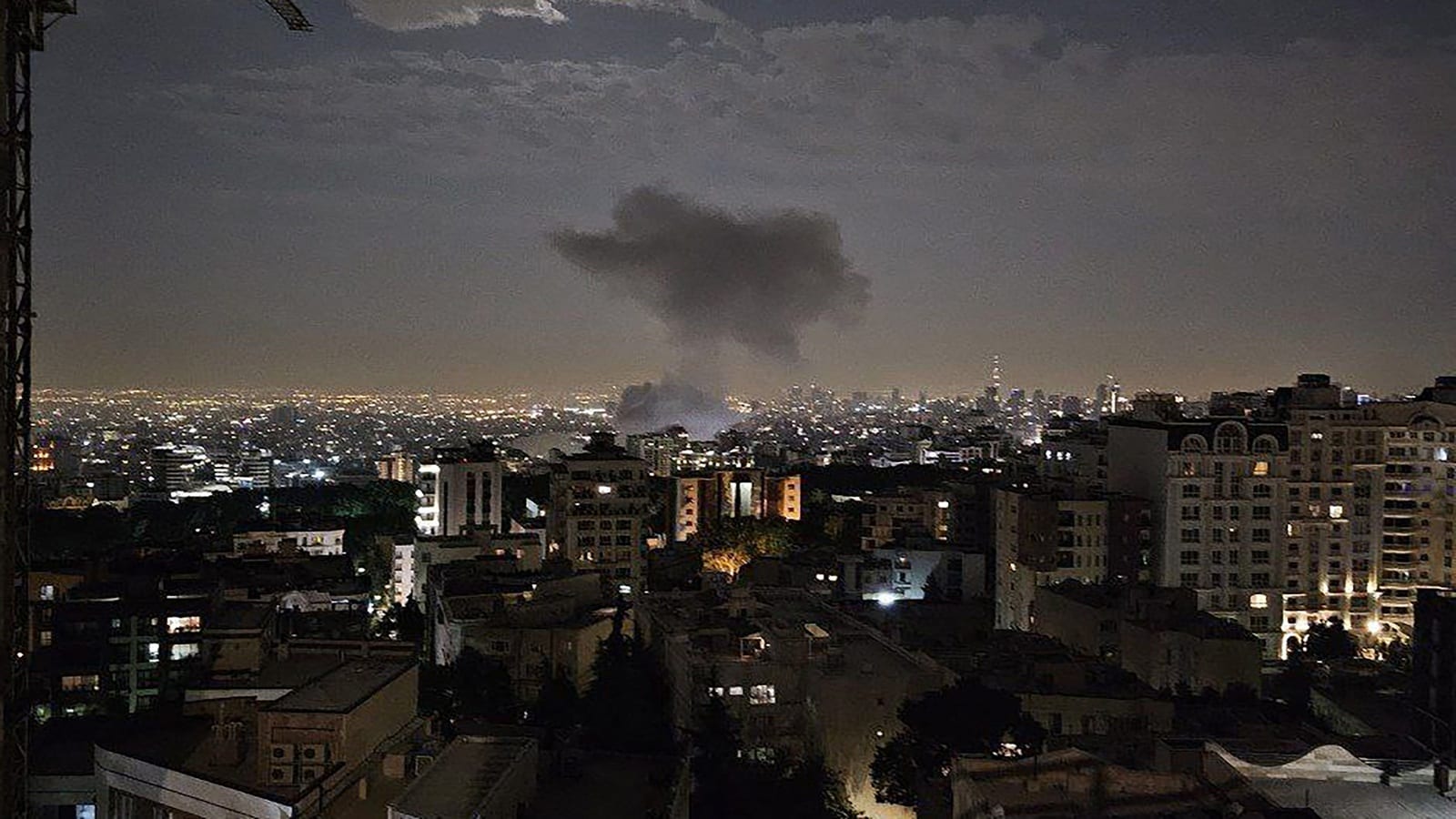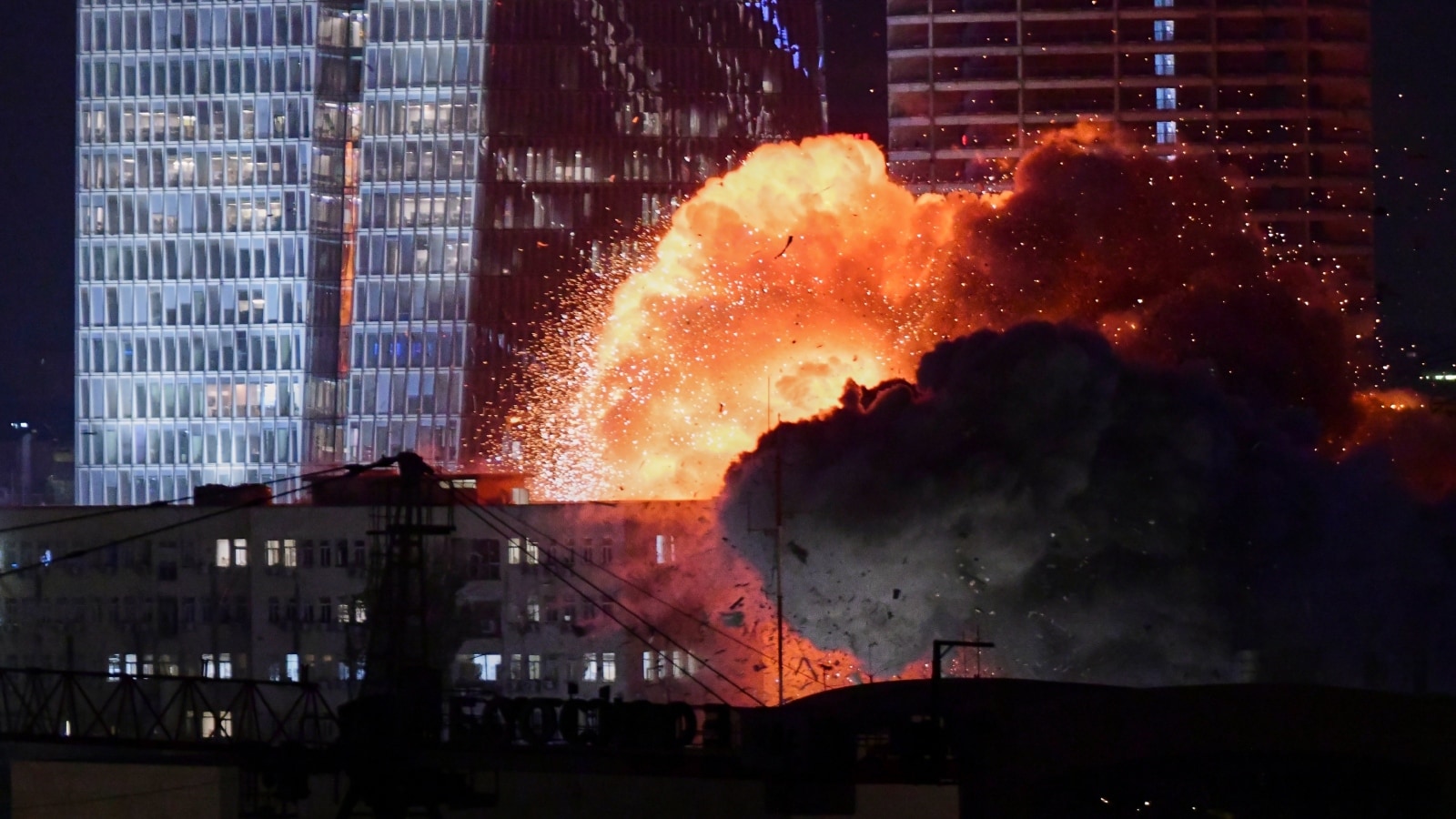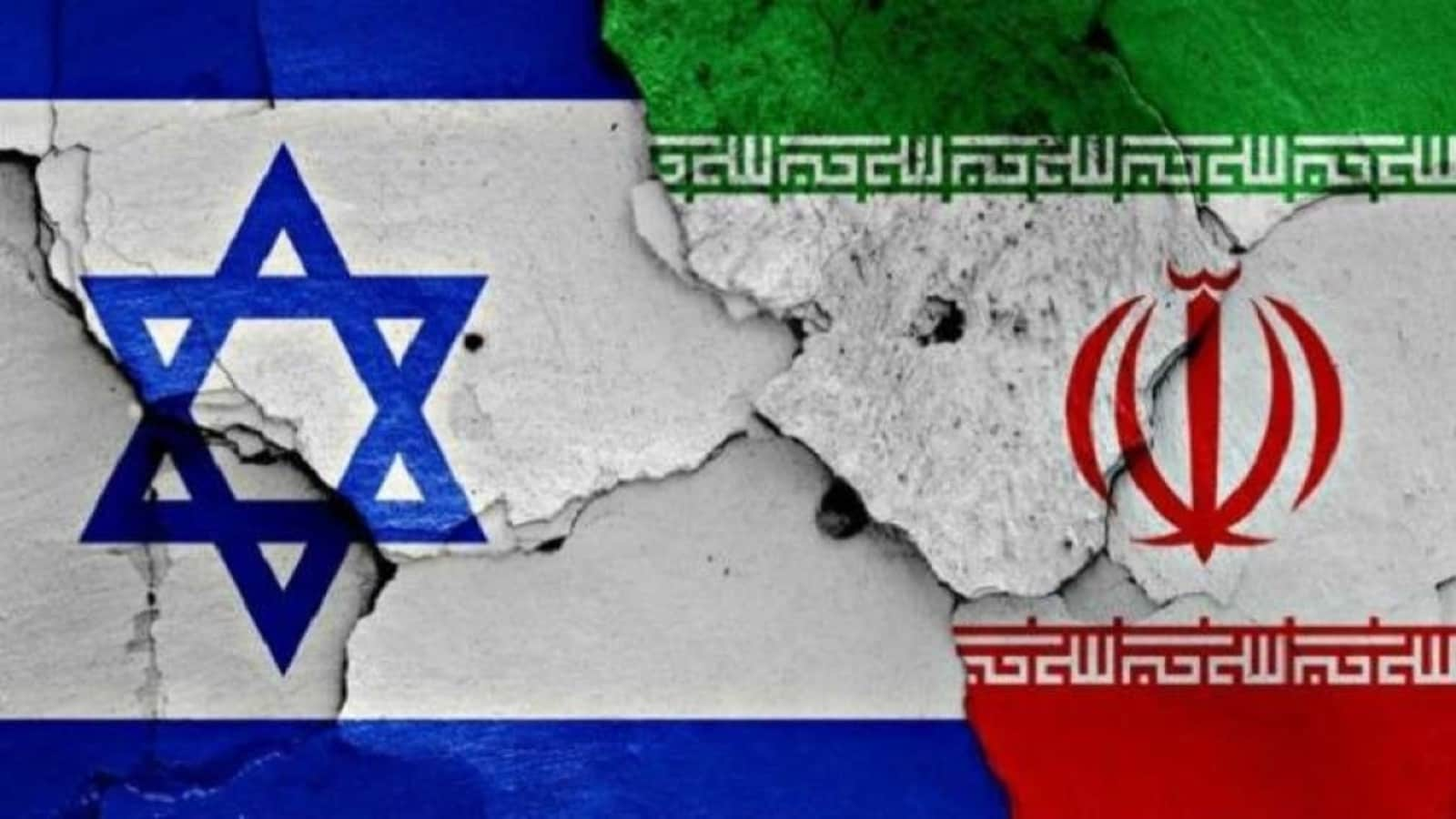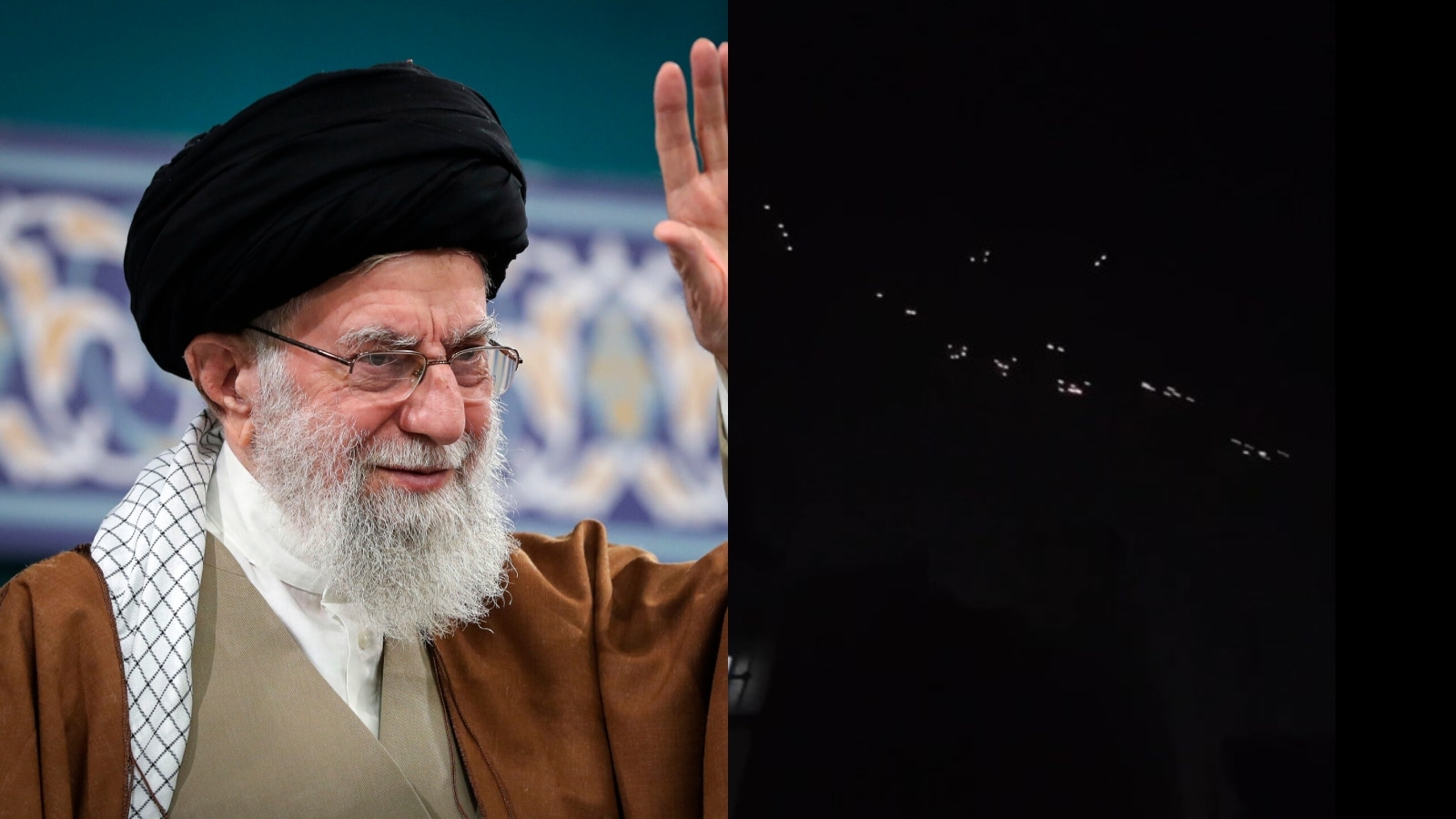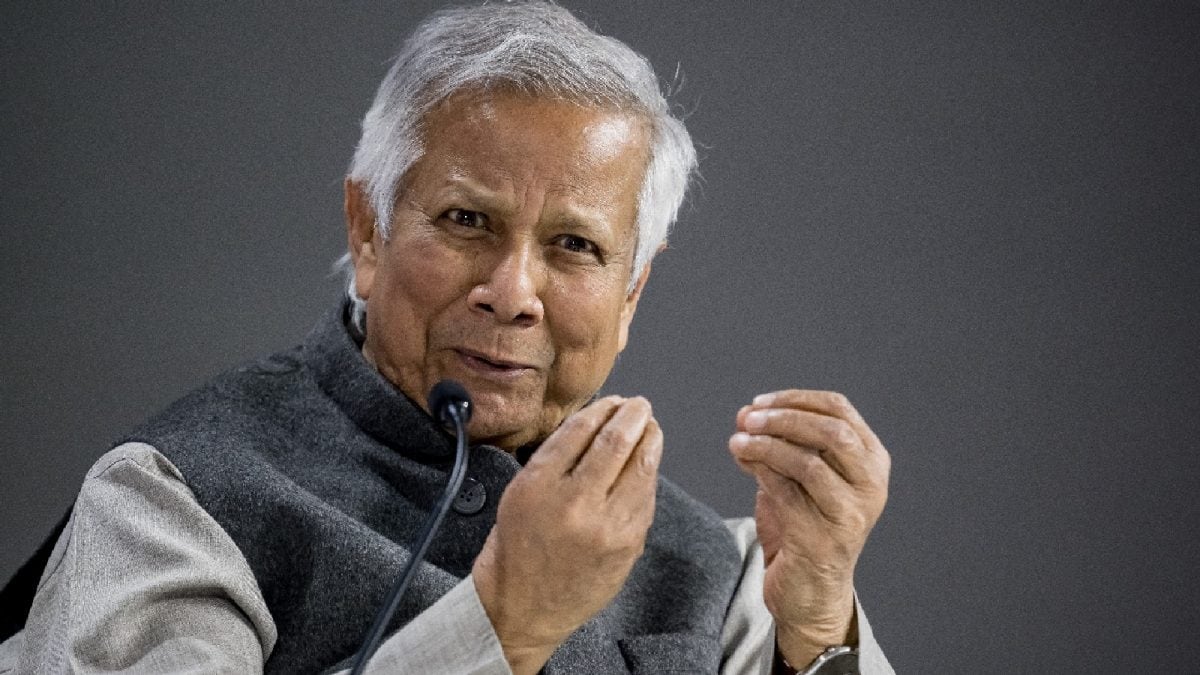Last Updated:June 13, 2025, 14:35 IST
With tensions soaring between Iran and Israel, Tehran’s nuclear stockpile is once again under global scrutiny

Israel's PM Benjamin Netanyahu points to a red line he drew on the graphic of a bomb used to represent Iran's nuclear program at the U.N. Headquarters in New York, September 27, 2012. (REUTERS/File Photo)
Tensions in West Asia have escalated into open confrontation. On June 13, Israeli Prime Minister Benjamin Netanyahu stated that Israel had struck the Natanz nuclear facility, calling it the “heart of Iran’s nuclear enrichment programme." Iran’s Atomic Energy Organization confirmed that the facility sustained damage in the attack.
Earlier in the day, Iranian state television announced the deaths of General Hossein Salami, commander of Iran’s paramilitary Revolutionary Guard, and General Mohammad Bagheri, the chief of staff of the Iranian armed forces. The deaths of two of Iran’s most senior military figures mark a significant escalation in the long-simmering conflict with Israel. Several other top Iranian military officials and nuclear scientists are also believed to have been killed.
These attacks follow months of Iranian missile activity and a growing stockpile of enriched uranium that has set alarm bells ringing globally.
At the centre of this crisis lies a question that has dogged global diplomacy for over two decades: how close is Iran to developing a nuclear weapon? The Islamic Republic maintains that its nuclear programme is strictly peaceful. However, the IAEA’s most recent report, dated mid-May 2025, paints a very different picture—one of uranium stockpiles far in excess of what was permitted under previous agreements, and enrichment levels just shy of weapons-grade.
What Does The IAEA Say About Iran’s Nuclear Stockpile?
According to the IAEA’s May 2025 report, Iran’s total enriched uranium stockpile has reached 9,247.6 kilograms. This is more than 45 times the 300-kilogram limit set by the Joint Comprehensive Plan of Action (JCPOA), the 2015 nuclear agreement Iran signed with the P5+1 — China, France, Russia, the United Kingdom, the United States, and Germany.
Of this, 408.6 kilograms have been enriched to up to 60 per cent purity. This is just short of the 90 per cent threshold considered weapons-grade. The IAEA says that if this near-weapons-grade uranium were further refined, Iran would theoretically have enough material for around 10 nuclear bombs. Enrichment to 90 per cent is necessary to make a nuclear weapon, but even reaching 60 per cent represents a major technical leap—and one that has drastically shortened Iran’s so-called “breakout time," the period it would take to accumulate enough fissile material for one bomb.
The IAEA had also recorded the presence of uranium particles enriched to 83.7 per cent at Fordow in 2023. Iran claimed these were caused by “unintended fluctuations" in the enrichment process. However, the agency’s concern has grown steadily in light of Iran’s reduced transparency and restrictions on inspections. Since 2021, IAEA inspectors have no longer had full access to continuous camera footage and real-time monitoring at key sites, significantly weakening the global watchdog’s ability to verify Iran’s claims.
Yet, as of now, Iran has not officially declared enrichment to 90 per cent, and the IAEA has not reported a resumption of the structured nuclear weapons programme it believes was halted in 2003. Nevertheless, the agency and multiple analysts now consider Iran’s stockpile and infrastructure to be weapons-capable, even if not weaponised.
Why Iran Violated The Nuclear Deal: The Breakdown Of JCPOA
The Joint Comprehensive Plan of Action (JCPOA), signed in 2015 by Iran and the P5+1 countries (the US, UK, France, Germany, Russia, and China), placed strict limits on Iran’s nuclear programme in exchange for sanctions relief. Among its terms, Iran was allowed to enrich uranium only up to 3.67 per cent and stockpile no more than 300 kg. It also had to shut down some facilities and submit to a stringent IAEA inspection regime.
The JCPOA was designed to build on Iran’s obligations under the Non-Proliferation Treaty (NPT), a global pact aimed at preventing the spread of nuclear weapons. As an NPT signatory, Iran had already committed to not pursuing nuclear arms, but suspicions over undisclosed sites and enrichment activities led to the 2015 agreement.
In 2018, US President Donald Trump unilaterally withdrew from the deal, calling it “a bad agreement" and reimposing sanctions as part of a “maximum pressure" campaign. Iran, in response, began scaling back its commitments under the deal, incrementally increasing enrichment levels and installing more advanced centrifuges. Multiple efforts to revive the agreement have since failed.
Inside Iran’s Nuclear Facilities: From Natanz To Fordow And Beyond
The IAEA continues to conduct regular inspections of declared Iranian nuclear sites, though with more limited access since the JCPOA broke down. The following facilities form the backbone of Iran’s enrichment and conversion infrastructure:
Natanz
Located about 250 km south of Tehran, Natanz is Iran’s main uranium enrichment site and a primary target of Israeli sabotage efforts. According to the IAEA, the facility operates nearly 70 cascades of centrifuges across its underground and surface plants. The existence of Natanz was first revealed in 2002 by an Iranian opposition group, triggering the global nuclear standoff.
The site suffered sabotage in April 2021, which Iran blamed on Israel. The latest strike on June 13, 2025, targeted this same facility, according to statements by both Netanyahu and IAEA chief Rafael Grossi.
Fordow
Constructed secretly under a mountain near the holy city of Qom, Fordow was publicly disclosed in 2009. It was originally described as an “emergency facility" meant to withstand aerial bombardment. Under the JCPOA, Iran had committed to halting all enrichment at Fordow, but this provision was abandoned post-2018.
In 2023, the IAEA detected uranium enriched to 83.7 per cent at this facility. Iran claimed the particles were due to process fluctuations, but the incident underscored the site’s proximity to weapons-grade operations. Fordow is estimated to house around 3,000 centrifuges.
Isfahan
The Uranium Conversion Facility (UCF) in Isfahan processes yellowcake into uranium tetrafluoride and then into uranium hexafluoride gas (UF6), the feedstock for centrifuge enrichment. According to the IAEA, Isfahan also contains a nuclear fuel fabrication plant and is the site of a new research reactor announced in 2022.
In April 2025, after Iran launched drones and missiles at Israel, the latter retaliated by reportedly striking an airbase near Isfahan, although the conversion facility itself remained unharmed.
Khondab (Arak)
The Arak heavy-water reactor, now called Khondab, was originally built to produce plutonium, another fissile material usable in weapons. Under the JCPOA, the core was disabled and filled with concrete. However, Iran has since notified the IAEA of plans to recommission the site by 2026, albeit in a redesigned format that reduces weapons-grade plutonium production. The site also contains a heavy-water production plant.
Tehran Nuclear Research Centre
Located in the capital, this centre houses a research reactor supplied by the United States in 1967. Its primary role is the production of medical radioisotopes. While not central to Iran’s enrichment programme, it remains under IAEA monitoring.
Bushehr
Iran’s only operational nuclear power station, Bushehr, was built by Russia and began full-scale operations in 2012. The facility continues to use Russian-supplied nuclear fuel, which is returned after use, thereby reducing proliferation risks. The IAEA maintains full oversight of this plant.
Darkhovin and Sirik
In late 2022, Iran began constructing a 300 MW power plant at Darkhovin. In early 2024, it started work on a large-scale nuclear power complex in Sirik, along the Strait of Hormuz. This complex is planned to include four reactors with a total capacity of 5,000 MW, according to Iran’s Atomic Energy Organisation.
So, Does Iran Want A Nuclear Bomb?
Iran has consistently maintained that its nuclear programme is for peaceful purposes, such as energy generation and medical research, and it remains a signatory to the Non-Proliferation Treaty (NPT). However, international suspicion persists, rooted in the country’s history of undeclared facilities, delayed disclosures, and restricted access for inspectors. The discovery of enrichment levels far exceeding civilian needs, coupled with the secrecy surrounding some sites, has only deepened those doubts.
The IAEA has not found evidence of a current, structured weapons programme, but its latest reports confirm that Iran now possesses the technical capability, infrastructure, and enriched uranium to produce approximately 10 nuclear weapons, if it chooses to further refine its stockpile to weapons-grade levels. This so-called “breakout capacity" is what makes the situation so volatile.
What Makes Iran’s Nuclear Ambitions Controversial
What makes Iran’s nuclear ambitions particularly controversial is the strategic context: it operates in a region already rife with instability, and its nuclear advancement could prompt a regional arms race or pre-emptive strikes, particularly from Israel, which views a nuclear-armed Iran as an existential threat.
What remains unknown, and most feared, is whether Iran will decide to cross the threshold from capability to weaponisation.

Karishma Jain, Chief Sub Editor at News18.com, writes and edits opinion pieces on a variety of subjects, including Indian politics and policy, culture and the arts, technology and social change. Follow her @kar...Read More
Karishma Jain, Chief Sub Editor at News18.com, writes and edits opinion pieces on a variety of subjects, including Indian politics and policy, culture and the arts, technology and social change. Follow her @kar...
Read More
News explainers What’s Fuelling Israel’s Strikes On Iran? Inside The Nuclear Programme Raising Global Alarms

 20 hours ago
20 hours ago
